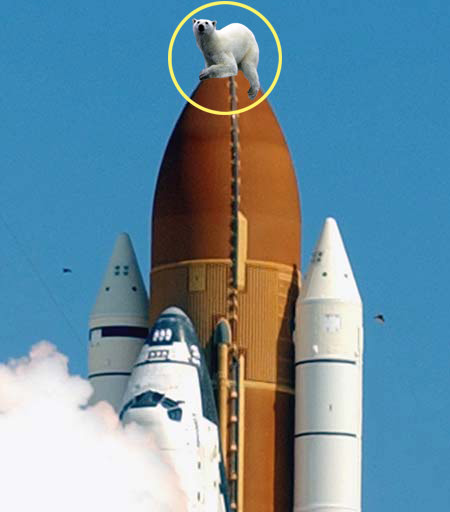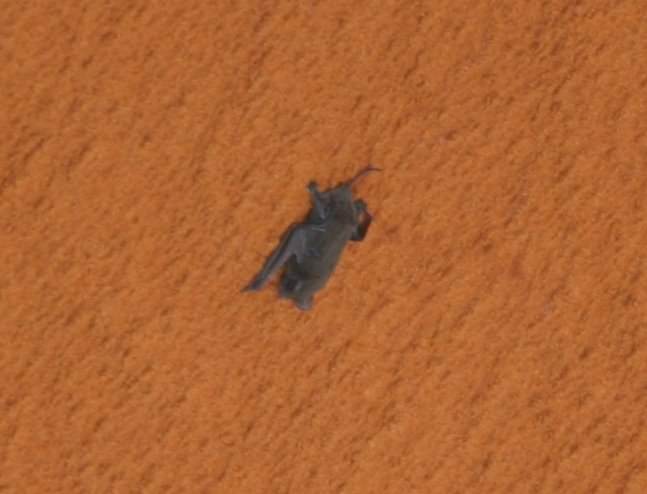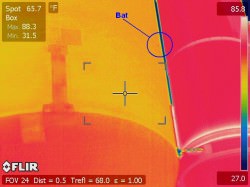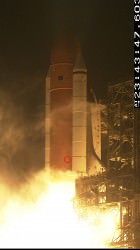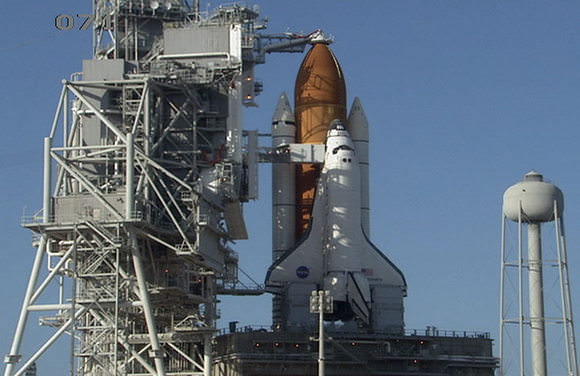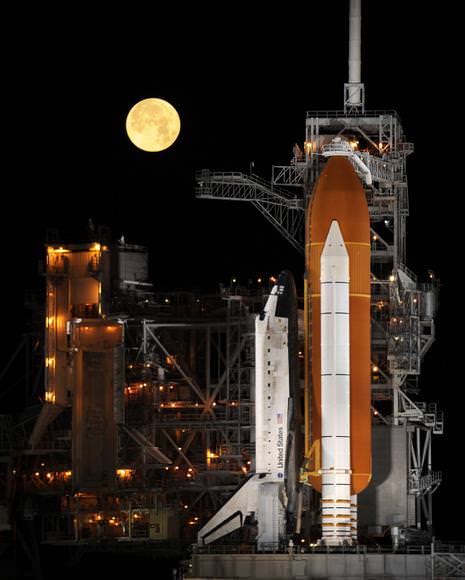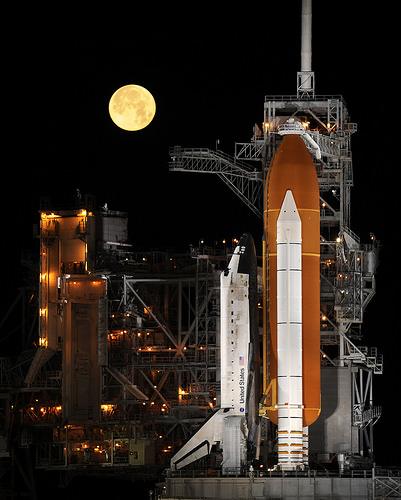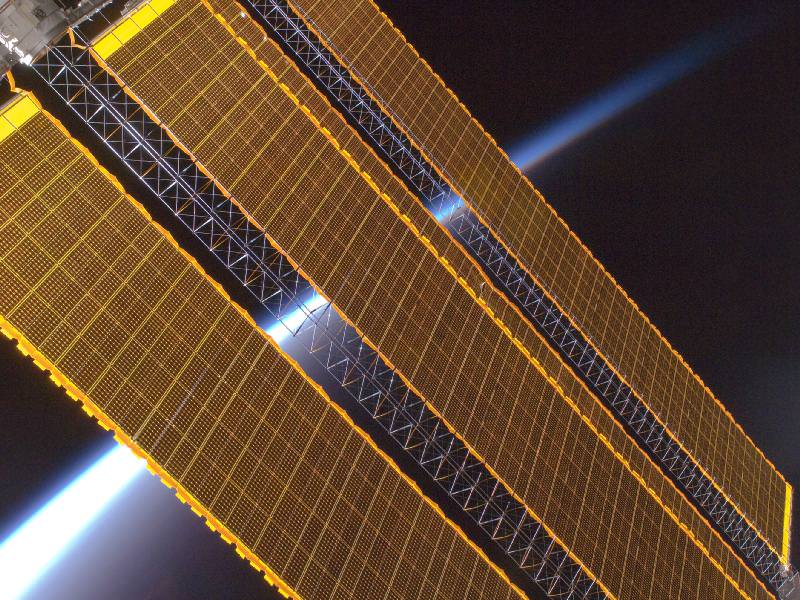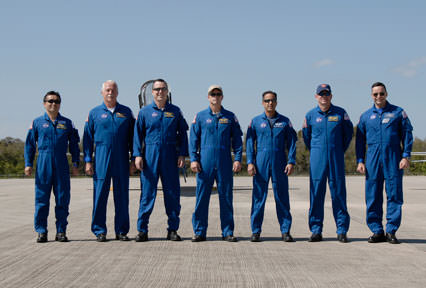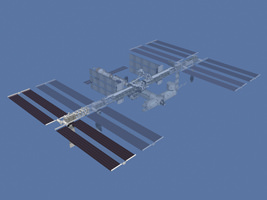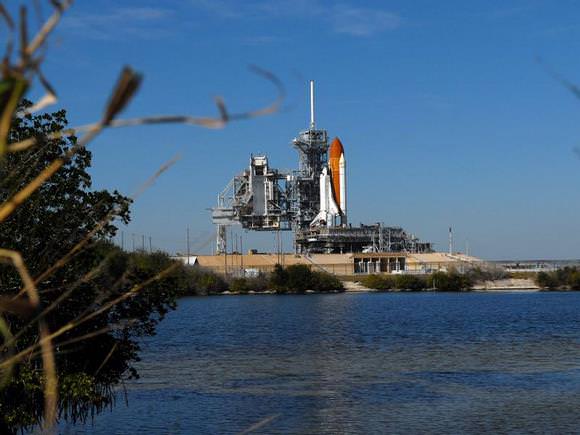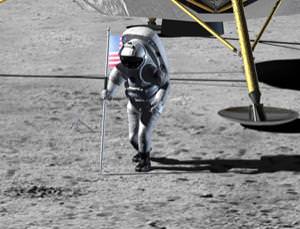[/caption]
The STS-119 mission to the International Space Station has provided some spectacular images during the crew’s activities to add the final solar array to the station. The image above shows astronaut Ricky Arnold — one of two Educator Astronauts on this mission– during the first EVA, where he and fellow spacewalker Steve Swanson (a.k.a. “Swanny”) outfitted the new truss to enable it to supply more power to the ISS. But hey, why are there no stars in this image?! The same reason there are no stars in pictures from the Apollo missions to the moon: the brightness of the foreground objects (astronaut, parts of the ISS, and even the bright Earth) doesn’t allow the camera aperture to be open long enough to capture the light from the stars. If the camera was set to record the stars, Ricky Arnold would be washed out white and featureless. (Take that Moon Hoaxers!) Enjoy more wonderful images from the mission below:
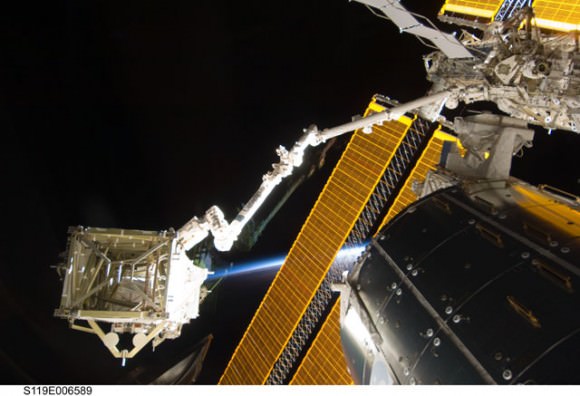
Here, on the day after the shuttle arrived at the ISS, the S6 truss was moved from shuttle Discovery’s payload bay to its location on the end of the ISS’s truss structure by the station’s Canadarm2. Also visible in the image are the Columbus laboratory, starboard truss and solar array panels.
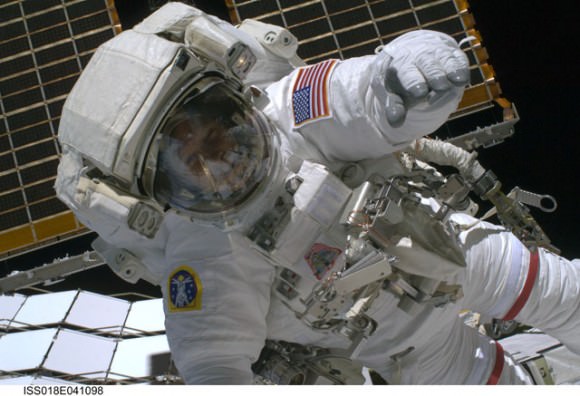
Here’s another great EVA image, this time showing Steve Swanson during the second spacewalk of the STS-119 mission. During the EVA, the two spacewalkers plugged in power and data connectors to the newly installed S6 truss, prepared a radiator to cool it, opened boxes containing the new solar arrays and deployed the Beta Gimbal Assemblies containing masts that support the solar arrays.
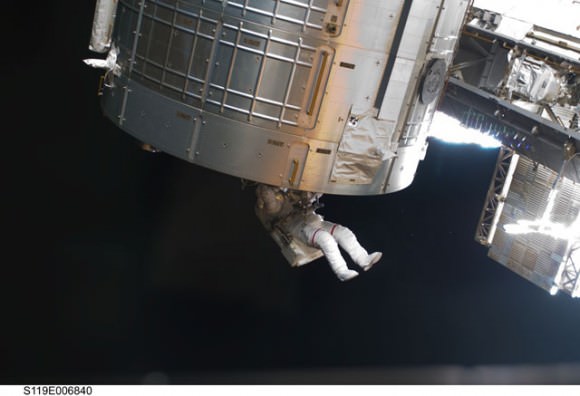
Hang on Swanny! Astronaut Steve Swanson appears to be dangling from the ISS’s Kibo Laboratory, during the second EVA of the STS-119 mission. During this spacewalk, Swanson and Joe Acaba successfully installed a second Global Positioning Satellite antenna on Kibo that will be used for the planned rendezvous of the Japanese HTV cargo ship in September. But they had trouble with a jammed locking pin that was installed backwards, preventing a stowed space station cargo carrier from fully deploying and locking into place. They also ran into problems re-configuring a wiring panel because of a stuck connector. NASA hopes to continue work on the problematic objects during the third and final spacewalk today (Monday).
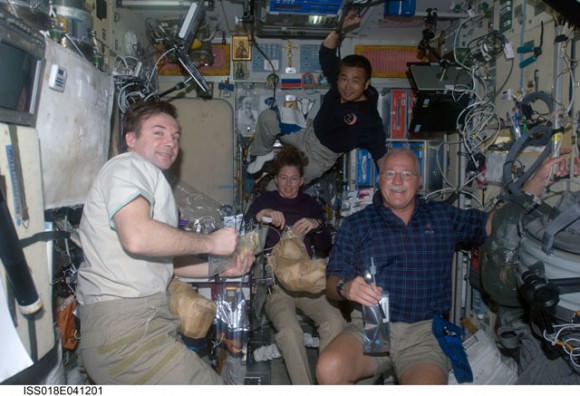
With all that hard work, eating regularly is important on a space mission. Crewmembers on the International Space Station share a meal in the Zvezda Service Module. Pictured (from the left) are cosmonaut Yury Lonchakov, Expedition 18 flight engineer; NASA astronaut Sandra Magnus, STS-119 mission specialist; Japan Aerospace Exploration Agency (JAXA) astronaut Koichi Wakata, Expedition 18 flight engineer; and NASA astronaut John Phillips, STS-119 mission specialist.
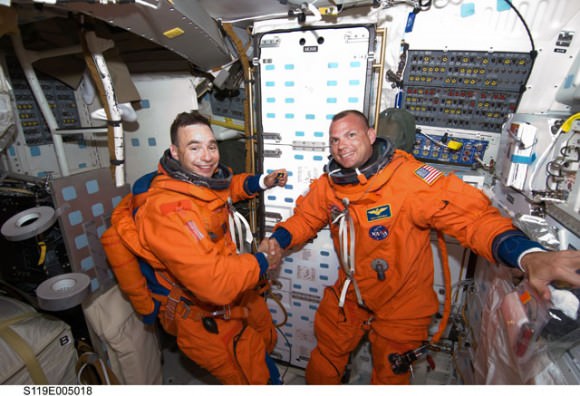
The STS-119 crew endured several delays for the launch of their mission, so when they finally reached space it had to be exciting — plus a relief to finally get the mission underway. With their shuttle launch and entry suits still on, astronauts Lee Archambault (left), STS-119 commander; and Tony Antonelli, pilot, shake hands on the middeck of Space Shuttle Discovery during postlaunch activities.
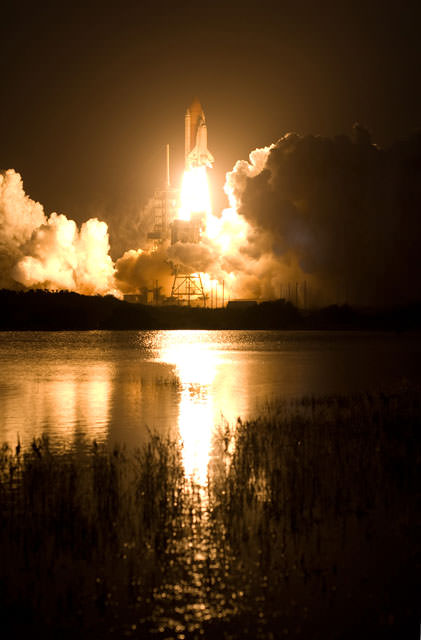
A beautiful night-time launch took place at 7:43 p.m. (EDT) on March 15, 2009 from launch pad 39A at NASA’s Kennedy Space Center. The great thing about night launches are that they are visible for incredibly long distances. Below are a couple of pictures of the launch taken by amateur photographers:
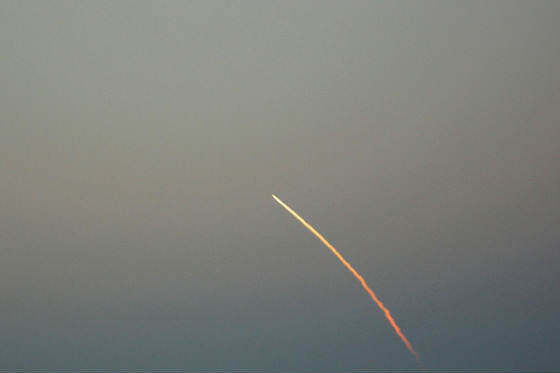
This image was taken by Arthur M. Stevens, who used a digital camera. The picture was taken from Port Richey Florida, which is on the Gulf Coast 15 miles north of St. Petersburg. Check out more of Art’s images at his website, Art’s Astronomy Network.
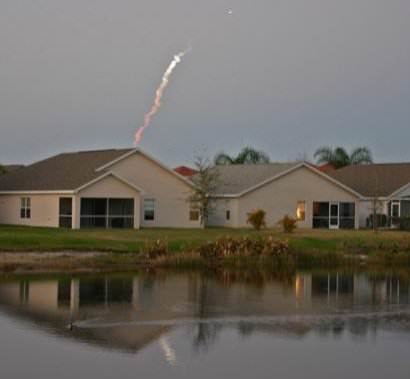
This STS-119 launch image was taken by Dr. Maynard Pittendreigh, who has been a life-long and very active amateur astronomer. This image was taken from Fort Meyers Beach in Florida.
Thanks to Arthur Stevens and Maynard Pittendreigh for sharing their images!
For more NASA images of the STS-119 flight, check out NASA’s gallery.


